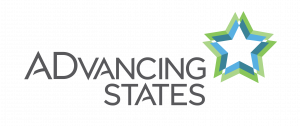- About
- Publications & Webinars
- State Technical Assistance
-
Initiatives
- Aging Programs
- Caregiving and Direct Care Workforce
- Direct Care Careers
- Enabling Technology
- HCBS Business Acumen Center
- Health Insurance Assistance
- Long Term Care Ombudsman Resource Center
- Long-Term Quality Alliance (LTQA)
- Managed Long Term Services and Supports
- National Core Indicators - Aging and Disabilities
- National Information & Referral Support Center
- Policy
- Opportunities

HCBS Conference 2019- Presentations
The Home and Community Based Services (HCBS) Conference is hosted annually by ADvancing States (formerly known as NASUAD). This event highlights best practices from across the country in home and community-based services. The conference includes federal, state, and local policymakers as well as those who administer, manage, and deliver waiver and other HCBS programs. This link contains all of the slide presentations from the 2019 HCBS Conference.
Complex Needs and Growing Roles: The Changing Nature of Information and Referral/Assistance
A project of ADvancing States and NCIL, this report shares information on a range of issues – including services and referrals, technology and social media, partnerships and systems, quality assurance, training and certification, and sustainability – from the perspectives of I&R/A professionals in state agencies on aging and disability, Area Agencies on Aging, Centers for Independent Living, Aging and Disability Resource Centers, No Wrong Door systems, and other non-profit human service organizations.
Area Plans: Build Accountability Into the Process
During this webinar, J. Blake Lanier, from the Georgia Department of Human Services Division of Aging Services, presented a step-by-step approach to manage an AAA network with a focus on goals, outcomes, and accountability.

Information and Referral/Assistance’s (I&R/A) Role in Connecting Clients to Benefits
This brief is a summary of survey results related to aging and disability agencies and I&R/A specialists' role in connecting individuals with public benefits. It provides an opportunity to learn about benefits screening, assistance, and outreach within aging and disability networks.
State Long-Term Care Ombudsman Program: 2019 Revised Primer for State Agencies
This updated primer explains key provisions of the Ombudsman rule. It highlights promising practices for coordination between State Agencies and the State Long-Term Care Ombudsman Program in long-term services and supports. The report was co-authored with the National Consumer Voice for Quality Long-Term Care, who serves as a partner in the Administration for Community Living funded National Long-Term Care Ombudsman Resource Center (NORC).
Directory of ACL National Resource Centers
This directory is a useful tool that lists all of the current ACL National Resource Centers. It includes a a brief summary of each center as well as key contact information for the center. The directory was last updated on April 30, 2019.
Collaborating to Address HCBS Workforce Challenges in MLTSS Programs
This report is the third in a series of publications from the MLTSS Institute. The report identifies the challenges and promising practices in addressing the mismatch between supply and demand for direct care workers in long term services and supports programs, all viewed through the lens of MLTSS programs. This report is co-authored by ADvancing States and Sage Squirrel Consulting, LLC.
Promising Practice Profiles
These profiles include promising practices that agencies use to conduct education and outreach to inform consumers about benefits, and to help aging and disability professionals connect clients to benefits, such as the Medicare low-income subsidies, SNAP, and LIHEAP. The tip sheets include practices about: engaging consumers through fun and interactive games; a system for providing comprehensive eligibility information; and tools to simplify benefits information for staff.

Implementing and Sustaining Evidence-Based Programs in Rural Settings
During this webinar, the Evidence-Based Leadership Collaborative (http://www.eblcprograms.org/) provided insight into the value of evidence-based programs. The EBLC highlighted rural communities who have demonstrated implementation success using community programs, 1:1 intervention and other program models. They also provided an overview of the ways Title III and other resources can be leveraged to improve access and sustain the work.
HCBS Conference 2018- Presentations
While faced with new challenges, reduced budgets, and growing populations requiring more services, states are stronger than ever, and the work they do is more effective than ever in reaching individuals and addressing their needs. The National Home and Community Based Services (HCBS) Conference 2018 highlights these achievements, allowing states to share best practices, present unique partnerships, and recognize the work of their peers.

